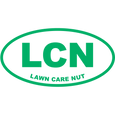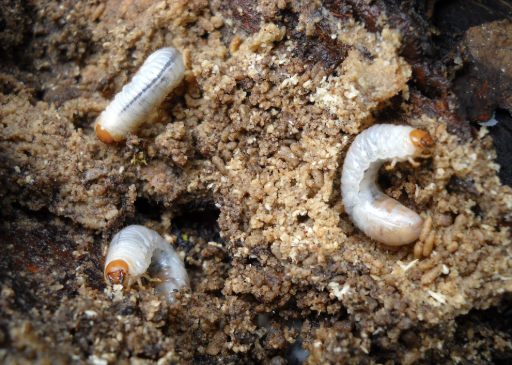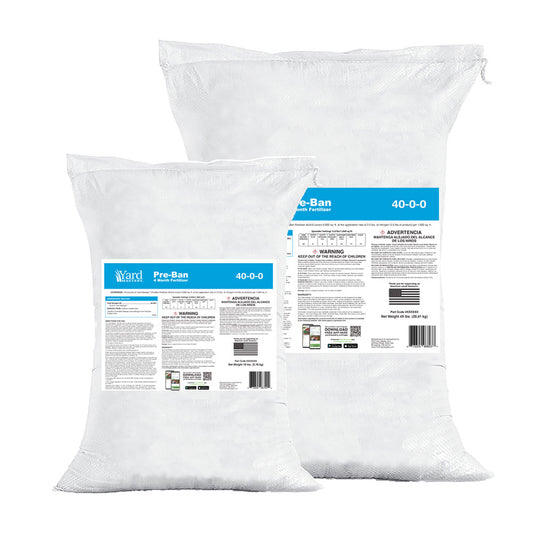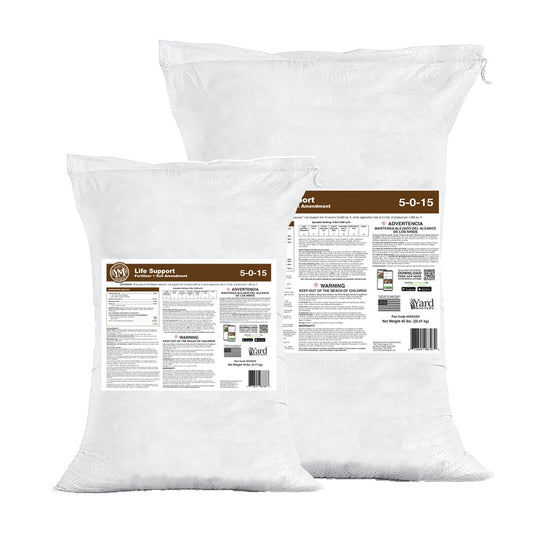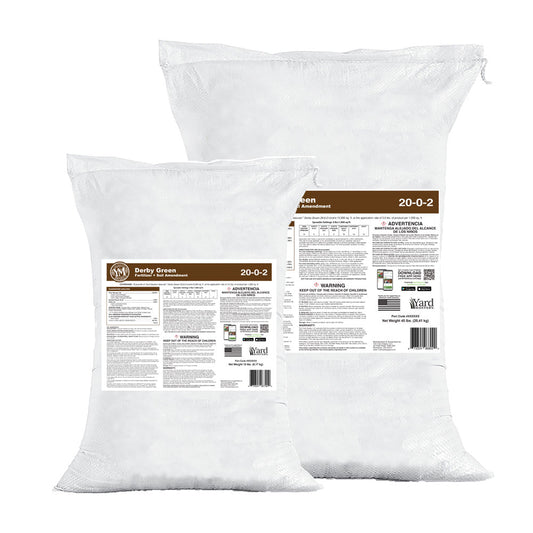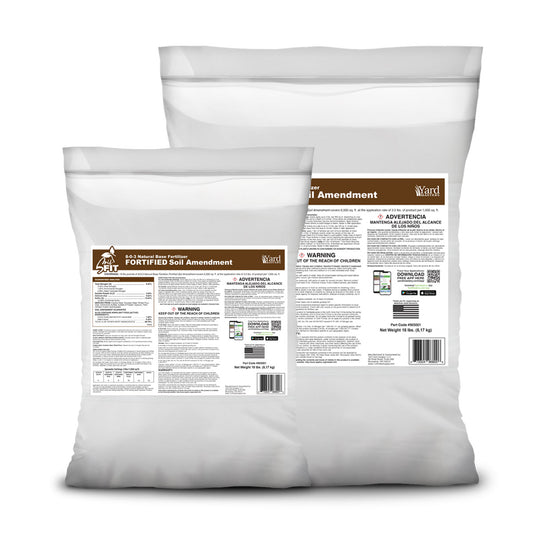What’s up ya’ll? Hope you had a wonderful, relaxing Memorial Day Weekend. I was not able to do too much since we had a tropical storm out in the gulf, rains and high winds kept me from applying anything, but I did get to mow in the rain which was fun (sort of).
No worries though, everything has passed and I’ll get mine down sometime this week with some #WeekNightLawnWork.
Speaking of that, the next thing we need to talk about are grub worms. In this guide, we get down into the details of exactly what to throw down, when, and a variety of different preventative and curative options for ya.
The Lawn Care Nut Ultimate Guide to Preventing Lawn Grubs

June Bugs
Grubs are the larvae stage of all kinds of May-June beetles. Here is a video that gives you some idea of their life cycle. Simplified, June bugs fly around in June munching on your landscape plants. During that time they mate and lay eggs in well irrigated, sunny portions of the lawn. Those eggs hatch into grubs which feed on turf roots in summer and fall before diving deep for winter. The next year they arise, eat a bit more, pupate and fly away in June! The circle of life in your home lawn.
When To Apply
The good news is, no matter where you live, or what grass type you have, the best time to PREVENT grubs is with an application in late May or June. This is one of those tasks that we should all do within the same window. Of course, be smart about it.
South Florida - you may want to apply earlier in May (like yesterday). But still ok to apply all through June.
Northern Minnesota - you could probably stretch it to July 4, but def no sooner than June 1st It’s a flexible window, but not too flexible. Let’s get into more detail:
1) Preventative - Active ingredients you may see are Imidacloprid or chlorantraniliprole. For best results, these products should be applied before grubs hatch. There are 3 stages of development that grubs go through once they hatch and ideally, we want the preventative we choose to go down and be watered in and taken into the plant BEFORE they hatch, or at least within a few days after they hatch. (they remain as eggs for just over 3 weeks before hatching). Key thought here is that just because you put the preventative down and watered it in today… it won’t be taken into the plant fully for several days after. If populations of grubs are bad, a few days can make a big difference in visible damage. Get to them early, here’s how they develop:

a) At the first instar stage - first instars munch on turf roots and organic matter immediately after hatching (July sometime), meaning they are near the surface. They remain in this stage for 3-4 weeks (based on soil moisture and temp) and then move into their second stage where they may dive down a bit deeper but still come up to feed.
b) The second instar is where most of the damage occurs but may not be noticed. Grubs are eating to grow fat for winter. This is also the midst of summer (August) and the damage can be mistaken for heat and drought stress or worse, other insects like sod webworm or disease may be adding to the stress on the turf. Meanwhile, grubs are feasting on roots in the soil. “Brown Spots” can take on a whole new meaning.
c) By September, most larvae will have molted to the third instar where they continue feeding - but now they are bigger and eat more! Preventatives will not affect them at this point, too late. They remain 3rd instar all the way through winter often going 8-10 inches deep to form their winter “earthen cells.”
d) When spring hits the next year, they munch a bit more and then pupate so in early June, you see them as June bugs!
2) Curative - The brand name Dylox (trichlorfon) is the most common. Another active ingredient you will find is a pyrethroid called beta-Cyfluthrin and another is carbaryl (Sevin). This is a strategy you use when you find grubs later in the year (probably September, October or November) and you need to kill them to stop damage immediately. This is the strategy I used at my home in Indiana for years. This is because my lawn was so thick that grubs munching on it never did visible damage anyway but if they did, I’d just spot spray locally and be done. Additionally, grubs were not a problem in my neighborhood anyway. If you have never had grub problems, your neighbors have not either, and your lawn is vigorous and thick - then just go with this strategy. Spot treat areas if needed later down the road and avoid the blanket sprayed application of preventative. No need to blanket the Earth if you don’t have to.
3) Combination Products - if you happen to miss the June window but still want a preventative, and are applying in July or early August, then these products work well. This granular Bayer product is ideal. It contains a preventative and curative. Just make sure you water it in. It will also kill ants, fleas, spiders and other nuisance pests in the lawn. That bag I linked there is only 10 pounds and if you want to use it to prevent grubs, you need the 5lb/1,000 rate so it covers 3,300 sq ft. More math below - just want you to understand that one bag may not be enough. This is why I always preach to you guys about measuring your lawn!
Spring Grub Worms
“I was planting flowers in April and found grubs in my beds and in my lawn, should these be treated?”
In most cases, these are NOT a concern. These are last year’s grubs that have already done most of their feeding and growth and have survived winter. Now they are just waiting to emerge as adult beetles in June. Lawns are growing so vigorously in spring that visible damage is rarely apparent anyway.

Also, let’s just logic a minute here:
Now that you know these are “last year’s” grubs, did you notice any damage last year? Is the lawn brown in spots that were also brown last fall and all year so far this spring? Is that where you found these grubs?... in that big brown spot that’s been there for over 6 months?
If the answer is “no,” “no. “no” and “no” then no worries, let the little lawn shrimp live out their last few days in peace. They will pupate in May anyway and feeding stops.
HOWEVER: if you found a bunch of them, they may be dropping their baby-sacks right back down close to their own hometown this season in your lawn. So that may be a clue to you that you SHOULD put down a preventative this season, like NOW, in June. Make sense?
(note: they are not actually “worms” but I use that word because it’s what the public calls them)
What to Apply Preventative
Imidacloprid - Brand Name you may see: Merit
This is what I have always used and what I refer to as the “gold standard” for grub prevention. It’s inexpensive, easy to apply and lasts 90 days or so in the soil which is plenty of time to keep grubs from feeding on your lawn during the critical summer and early fall months. (this is also why you should not apply too early! If you live in the midwest and applied in April - your Imidacloprid product may be ineffective by late July leaving you vulnerable)
I’m not going to get complicated in the chemistry here but it is interesting that this product comes from a family of neuroactive insecticides known as Neonicotinoids. (or neonics)
You recognize anything in that word? Sound like nicotine? If so that’s because it’s very similar. In fact, just as cigarettes (nicotine) suppress your appetite as a human, they do the same thing to the grub! And that’s exactly how they work: You apply the neonic (Imidacloprid), water it in so it gets into the soil, grass roots take it in and from there, when the grub takes a bite, he immediately starts to feel full and stops before damage occurs. In fact, he feels so full for so long that he ends up dying of malnutrition.
One drawback here is the growing evidence showing the negative effects these products have on honeybee populations. I’m not leaning one way or the other on this issue at this point, but I will say that if you have tons of flowering clover in your lawn right now, you probably should just choose another product as your preventative. In general, keep the neonics away from anything that is flowering. If your lawn is 100% weed free then I would not be concerned about this, Throw’er Down (according to labeled rates)
Another drawback to watch is that Imidacloprid doesn’t have as long of a residual as it used to. You basically get 90 days on grubs now, whereas years ago when it was introduced, we could get 120. This illustrates that insects are becoming resistant to this product, albeit slowly over time. If you stick to the application windows I recommend above, you will be fine, no worries.
Additional notes: Imidacloprid provides suppression of chinch bug and can also be used to control mole crickets (a real problem in some southern areas) at higher rates.
These products must be watered in. ½” of water immediately after application.
Product Name: Hi-Yield Grub Free Zone III
Active Ingredient: Imidacloprid 0.5%
Type: Granular
Size: 10 lbs
Application Rate: 1.5 lbs / 1000
Bag Covers: 6,666 sq ft
Cost: $39.00
Cost per 1,000 sq ft: $5.91
This is a quick and easy way to get your grub application down. Most of you are used to applying dry products and you feel comfortable with them. I totally get that!
However, you are going to pay more here as you can see ($5.91 per 1,000). Additionally, it’s not that easy to get down only 1.5lbs of granular product with a cheaper spreader. This is more of a precision application at this lower rate.
If you do end up putting down too much, you aren’t really going to hurt anything but..., ...that is such a waste and we don’t want to be getting crazy with this product anyway. I’m not saying this to scare you. I’m really just trying to call out the fact that you need to pay attention here. This isn’t Milorganite where I tell you to just go out and Throw’er Down and hope for the best. You really do want to be sure and get this one pretty close if not dead on. If you need to, invest in a higher quality spreader. (the Earthway 2600APlus and 2150 are both excellent).
Product Name: Dominion 2L Concentrate
Active Ingredient: Imidacloprid 21.4%
Type: Liquid Concentrate
Size: 27.5 fl oz
Application Rate: .5 oz / gallon (1 gallon covers 1,000 sq ft)
Bottle Covers: 55,000 sq ft
Cost: $21.24
Cost per 1,000 sq ft: 39 cents
Go ahead and take a second look at that. Yes, ½ oz per gallon and 1 gallon covers 1,000 sq ft. That means this bottle of concentrate, when mixed, covers 55,000 sq ft. If you have a 10,000 sq ft lawn, you will get more than 5 years of applications from this one $24 bottle of concentrate. This is by far the cheapest option and if you want to learn how to spray liquid, this is a good place to learn. Be sure to watch my video on calibrating a sprayer properly (and get a good quality sprayer) and get out there and spray and pray! If you get a little heavy, nothing bad will happen. That’s not me telling you to be irresponsible, but it is me saying to you that it’s ok to learn with this product. No surfactant needed. Get it watered in immediately after application. If you need a quality backpack sprayer, this is the one I use in my videos.
Lastly, I know the bottle reads “termiticide” but this is most definitely also a lawn care product. As you learn more and more you will find that many of the insecticides we use in lawns and landscapes also have application uses in pest control for homes and buildings.
This is a liquid application so you can also mix in RGS at 3oz/gallon right into the same tank. Let’s protect those roots from grubs, but let’s also encourage them to grow deeper and thicker at the same time
Product Name: Merit Insecticide Granules

Active Ingredient: Imidacloprid - 0.5%
Type: Granular
Bag size: 30 lbs
Application Rate: 1.5 lbs / 1000
Bag Covers: 20,000 sq ft
Cost: $59.99
Cost per 1,000 sq ft: $2.99
If you like brand names, this is it. This is the original Merit and it comes in a big bag that covers 20,000 sq ft. It’s inexpensive at $2.99 per 1,000 sq ft. Just keep in mind: you can’t really store this stuff long term once the bag is opened. Humidity will make it clumpy and unusable. That’s why I give you the smaller bag option above. However, if you have a bigger lawn, or a neighbor you want to share with (and you prefer granular options) this is your best choice. Get it watered in immediately after application.
Imidacloprid final thoughts: I am applying a grub preventative to my lawn his year here in Florida. I’m going to use the Dominion 2L option above. I do have concerns with grubs, but more-so with mole crickets. With this product, I can protect against both. I also like this option for its suppression of chinch. I will be applying at a higher rate (for mole cricket) of .6oz / gallon.
What to Apply Preventative
Chlorantraniliprole - Brand Name you may see: Acelepryn
This is our second choice for preventatives and it’s also a good one. First off, you get a longer residual with this product. This can be helpful if you are getting 2 stages of grubs in south Florida for example, or if you have to apply early at a vacation home or something like that. You will get a solid 120 days residual here.
It’s also NOT a neonic so any of you sensitive to the honey bee issue, this is definitely your choice and as you will see, Scott’s Grub Ex is on this list, very easy for anyone to get. Lastly, this does need to be watered in, but if it sits 48 hours it’s ok, just not much longer. Get it watered in!
The only drawback is cost. You will see it’s much more expensive than our liquid and granular option above.
Product Name: Acelepryn G
Active Ingredient: Chlorantraniliprole 0.2%
Type: Granular
Size: 25 lbs
Application Rate: 2lbs / 1000 sq ft
Bag Covers: 12,500
Cost: $129.27
Cost per 1,000 sq ft: $10.34
Once again, if you like brand names, this is your choice. Notice that cost per 1000 though? Much higher. Water it in within 48 hours, sooner the better of course.
Product Name: Scott’s GrubEx
Active Ingredient: Chlorantraniliprole - 0.08%
Type: Granular
Size: 14.35 lbs
Application Rate: 2.87 lbs / 1,000 sq ft
Bag Covers: 5,000 sq ft
Cost: $21.98
Cost per 1,000 sq ft: $4.39
I’m showing you this option because I realize there are a number of you who trust this brand and prefer to go straight to your local store and pick some up. I totally get that and this is a great choice. It’s cheaper overall than Acelepryn and easier to apply because it requires a little higher rate. The link above is to Amazon and with Prime free shipping this may be a super easy option too. However, it still doesn’t come in as cheap as the Merit granular above.
I don’t have an affordable liquid option for Chlorantraniliprole, sorry. If you want to use this product, stick with granular.
What to Apply Curative
Trichlorfon - Brand Name you may see: Dylox
Product Name: Dylox 6.2 Granules
Active Ingredient: Trichlorfon 6.2%
Type: Granular
Size: 30 lbs
Application Rate: 3lbs / 1000
Bag Covers: 10,000 sq ft
Cost: $67.95
Cost per 1,000 sq ft: $4.53
Apply this in areas where you find grubs plus a 10ft additional buffer zone to ensure you get them all. When in doubt, just blanket the entire sunny part of the lawn, water it in. You may need a second application 14 days later if there are high populations of grubs later in the season. This product has the added benefit of being decently effective against sod webworm, mole cricket, and armyworm.
You can probably find products with this active ingredient at your local big box store as well, just keep in mind that concentrations of active ingredient can vary, thus changing the application rates.
Clothianidin - Brand Name you may see: Arena
Product Name: Arena
 Active Ingredient: Clothianidin - .25%
Active Ingredient: Clothianidin - .25%
Type: Granular
Size: 30 lbs
Application Rate: 2.25 lbs / 1000 (this is a lower mid rate for grubs)
Bag Covers: 13,333 sq ft
Cost: $104.54
Cost per 1,000 sq ft: $7.86
When I worked at TruGreen - this was my favorite quick kill insect control. It’s expensive but effective. It’s also got some residual activity against grubs and other insects but we don’t really buy it just for that reason alone. As a preventative, it’s super expensive and won’t last as long as the other preventative options. But as a curative, this product is VERY effective, quickly. At higher rates, it’s absolutely an excellent choice against resistant chinch bugs and armyworms too, better than Dylox. Water it in.
Combination Products
I do have this interesting option that some of you may enjoy. If you have been considering a fungicide application as well as a grub application, you’ll want to look at this:
 Caravan. 2 lbs per 1,000 sq ft. Water it in!
Caravan. 2 lbs per 1,000 sq ft. Water it in!
Bag covers 15,000 sq ft at that rate (it’s a 30 lb bag).
Cost is $101.00 or $6.73 per 1,000 sq ft.
Active ingredients: Azoxystrobin - 0.31% , Thiamethoxam - 0.22%
Pretty cheap to get season-long grub preventative and 30 days disease coverage all in one application. (Azoxystrobin is a group 11 fungicide. Thiamethoxam is a neonic insecticide like imidacloprid)
One more here, let me offer you what you could consider to be a “transition product.” This Bayer Complete Insect Killer is for those of you who happen upon this guide sometime in July or early August and you want some prevention but also some cure at the same time. The curative in this product will only get the grubs if they are at the top 1” of soil. It won’t go deep to kill, but it will to prevent. Timing is critical.
This would also be good any time if you want to prevent grubs but also want to kill mosquitos in the lawn, or ants, fleas, and ticks. This product contains both the preventative Imidacloprid - 0.15%, with the added kick of Beta-Cyfluthrin - 0.05% for your “quick kill” curative. This needs to be watered in as well.
Product Name: Bayer Complete Insect Killer
Active Ingredient: Imidacloprid - 0.15%, Beta-Cyfluthrin - 0.05%
Type: Granular
Size: 10 lbs
Application Rate: 3lbs / 1000
Bag Covers: 3,300
Cost: $24.99
Cost per 1,000 sq ft: $7.57
This was brought to you by myself (Allyn Hane, The Lawn Care Nut) with a lot of input and technical advice from: Matt Martin, The Grass Factor
Make sure to give Matt a follow and say hi!
There you go my friends, a VERY complete guide to grubs and how to prevent or kill them. I hope you have gotten something from this guide. Please consider subscribing to my YouTube channel where I give out tips every week. You can also find me on Twitter and Instagram.

